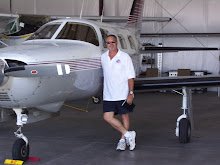I get asked a lot of questions. Sometimes privately, sometimes publicly posted, but I try to respond to the best of my ability. This was my response to a question on RC Groups from a long time slope guy in reference to V-tails for open class thermal duration:
Nice to see you learning all you can about this TD stuff. You slope guys starting to fly TD.... there goes the neighborhood.
The V tail for duration question is one that has been around a long long time. There are many schools of thought... and... naturally... I've got my own opinion... and of course... mine is the only right one. The fact of the matter is, V-tails are cool, they're sexy, and a V-tail is a compromise. If the V is sized to be correct in pitch, it will be undersized in yaw. If it's sized more towards yaw, it will be oversized in pitch. Not that far off in either direction... certainly flyable... but a compromise none the less. The typical trend is to optimize the V-tail for the correct pitch feel, and live with the adverse yaw issues generated as we get slow and hang it on the wing.
The main problem shows up in contest flying, not so much due to the V-tail, but due to the articulated, and not full flying, stab. Most people tend to land with almost full flap deflection. That means that the elevator is in a full compensation mode, with not much authority left to push over with. I've seen many pilots fly right over the spot with their V-tail equipped model, push full down on the elevator stick, and start this big slow gentle arc towards the earth, barely missing their shins, but certainly missing their landing... they then look at their timer, then down at their transmitter, back at their timer as they wave their arms up in the air, wrongly proclaiming... "I had nothing" (This is a problem with any model with an articulated stab - t-tail, cross-tail... V-tail.) The full flying cross tail gets around the pilot's bad habit, with a much more linear response, even if already in full compensation mode.
This can all be overcome by creating good landing habits. Don't land with your flaps down... I can't remember the last time I broke a flap servo, but that's not why I do it. With the flaps down, the model will stay more buoyant at the slow speed, and if not stuck hard, will float a bit more, even along the ground, and will yield inconsistent landing scores. Close and push all at the same time.... that gets rid of all sorts of problems... and will even allow you to utilize that sexy V. Sure worked for Feigl...
Subscribe to:
Post Comments (Atom)


Interesting thougths, but i wonder how a tail surface can be oversized ? I mean, aerodynamically oversized ? To me, for stability and control, the bigger the tail surface, the better. The problem with big tail surface is just a matter of weight: the bigger, the heaviest, which isn't good for TD gliders. But one of the advandage of the V-tails is, that they are generally lighter than X-tails. Even slightly oversized !
ReplyDeleteI agree with the benefit of a full flying stab, giving a more linear response. I find the supra stab undersized, even if i have seen this summer that some people did only need half of it to fly really well !! Anyway, the stalker stab looks great, such as the vertical tail. OK no V-tail for the Stalker....
Please keep sharing on this blog !
Loïc Debisschop